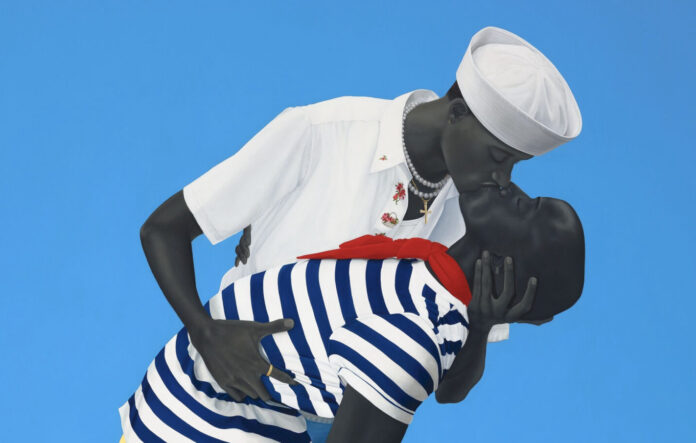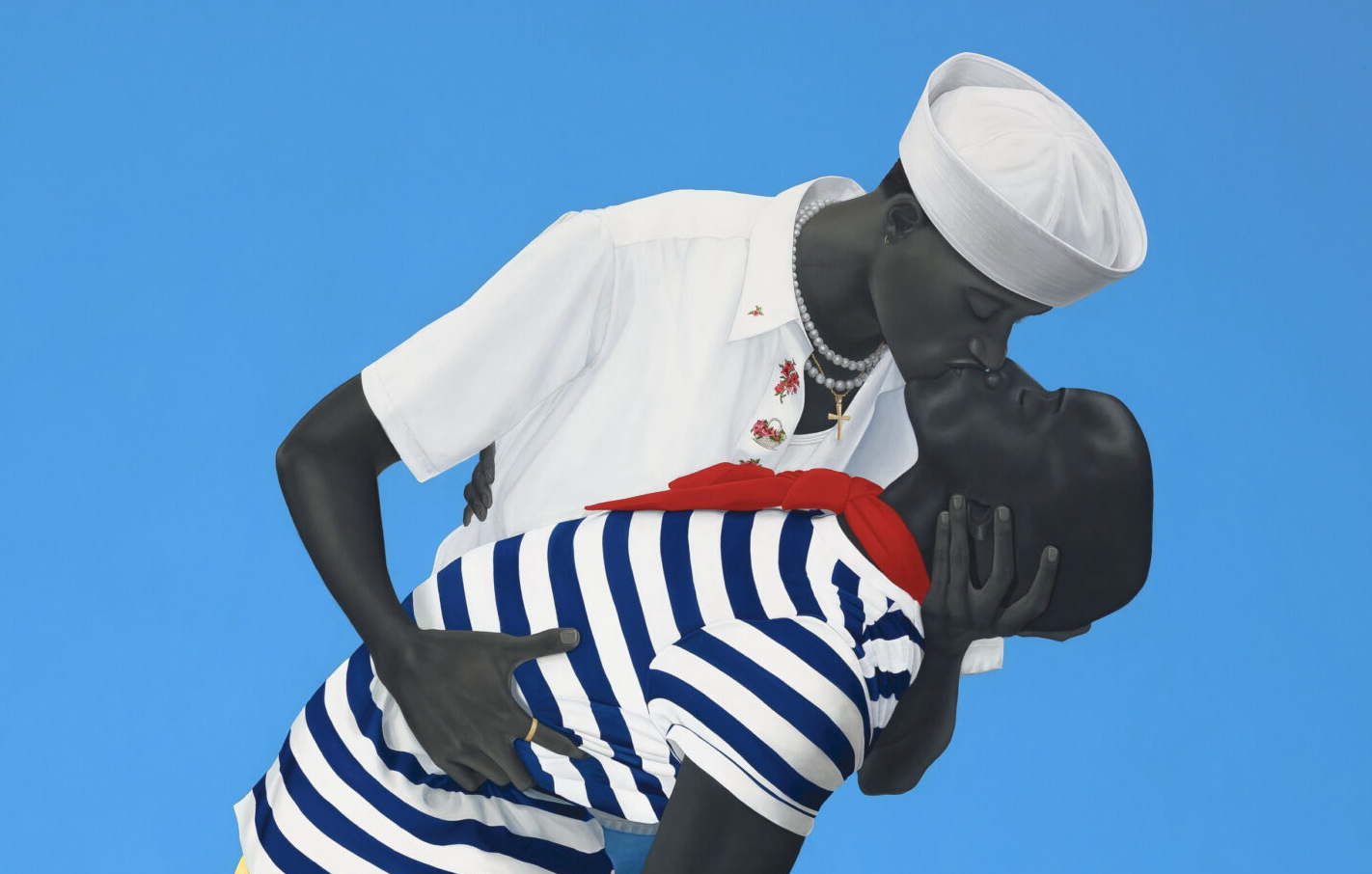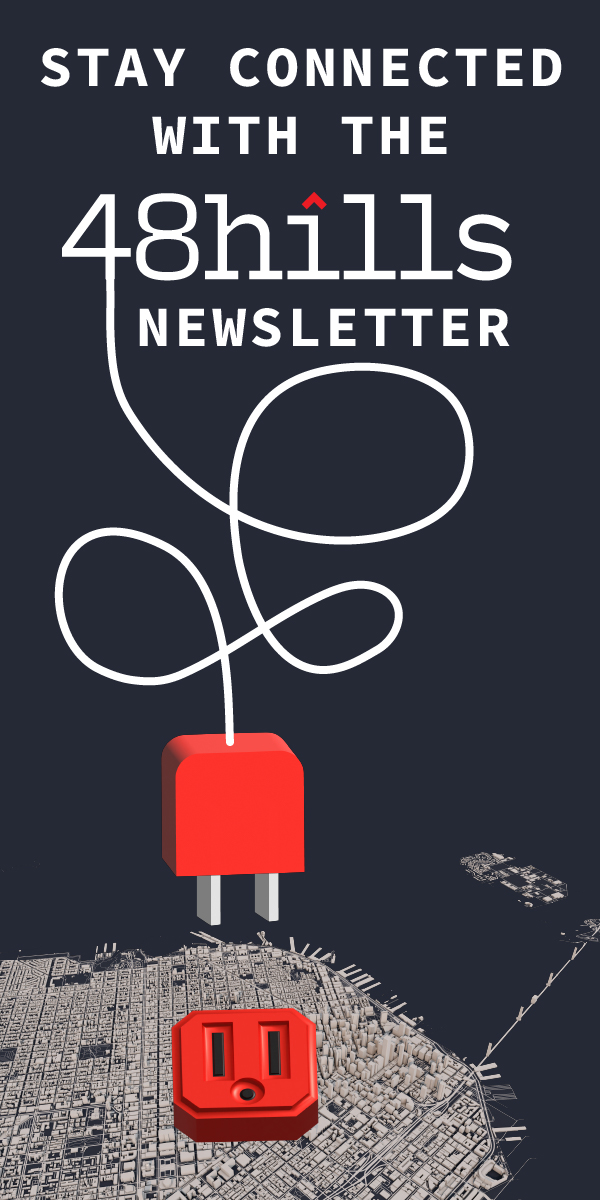In 2017, in the first year of the Obama administration, the First Couple selected two up-and-coming Black artists to paint their official portraits: POTUS went for Kehinde Wiley, and FLOTUS for Amy Sherald. Both paintings, unveiled in 2018, received wide praise as both aesthetically stunning and politically gratifying, reflecting affection for the popular new First Couple. They were also received with an appreciation for the fact that two Black artists had cracked the historically white racial ceiling of the Smithsonian’s National Portrait Gallery—and in doing, doubled the gallery’s attendance numbers.
In the last moments of the at-times progressive Biden administration, Sherald, a Georgian now living in New York, has been given her first museum retrospective at the San Francisco Museum of Modern Art. It’s a bittersweet irony, with 47 on the horizon, but still something of a moral victory for democratic values. Comprised of some 50-odd paintings made during the past 17 years, the exhibition, entitled American Sublime (through March 9), depicts Black people as fully realized personalities, comfortable within their skins, defying historical oppression.
As MAGA devotees, fearful of change, shout, “You will not replace us!,” Sherald has in a way done just that through her art, creating an alternative art history with Black people (stylized into shades of gray) at its center. Yet she works from humor and even whimsy, rather than rancor.
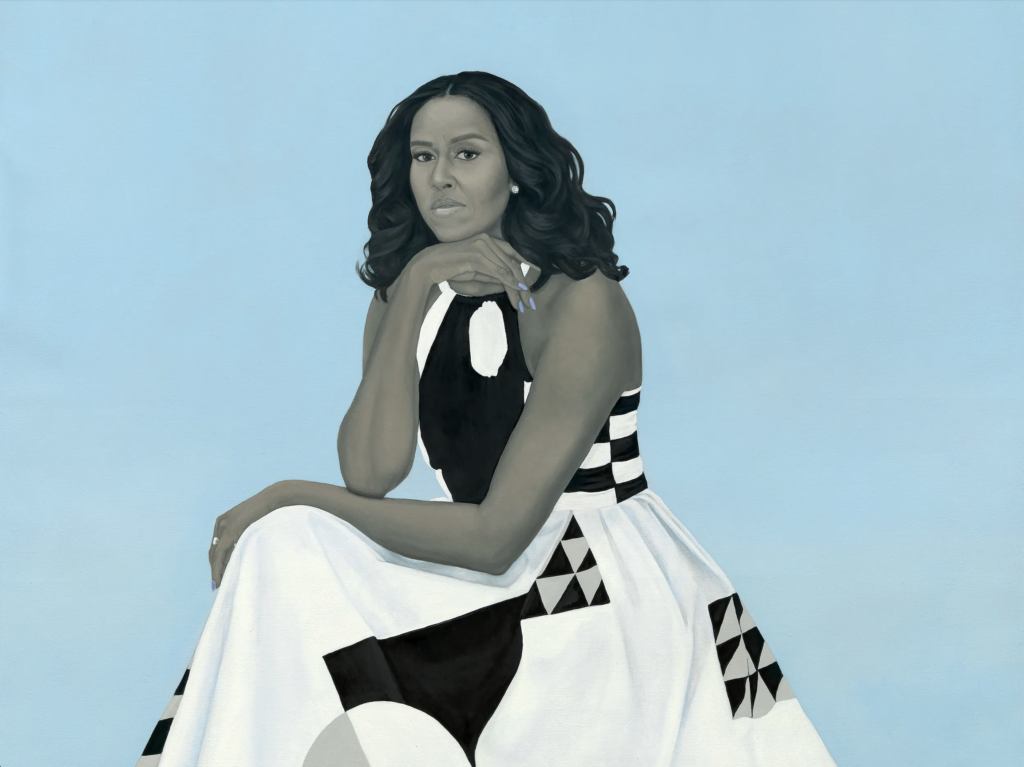
Sherald’s subjects are based on models that she has photographed, but they are outfitted with clothing, props, and shoes by the artist so that they appear to be symbolic portraits without easily understood meanings. At times they’re shown posing for the artist straightforwardly and impassively, like the German working people in August Sanders’ socioeconomic photo portraits, or Richard Avedon’s photos of celebrities; sometimes they gesture playfully, as if caught in a friend’s snapshot—mugging.
Sherald’s use of costumes and props to create symbols of a possible Black future resonates with progressive contemporary audiences, but, curiously, echoes the practice of narrative painters of the past—Rembrandt comes to mind—who used studio accessories and props as symbolic attributes to bring to life Biblical and historical themes.
Grounded in reality but pushed toward narrative, the unknown subjects promote a vision of racial equality for Black people—who are, it should be stated, not confronted by people of other complexions. Indeed, Sherald, who grew up gazing on the studio photo portraits of relatives, chooses to paint Black people in grisaille, or palette of grays, which contrasts with the bright color and patterns of the clothing that she has chosen for their outfits; the clothing catches the viewer’s eye so that in some cases, faces seem almost recessive, requiring an adjustment of one’s vision, as if the self were private and covert rather than public and commodified.
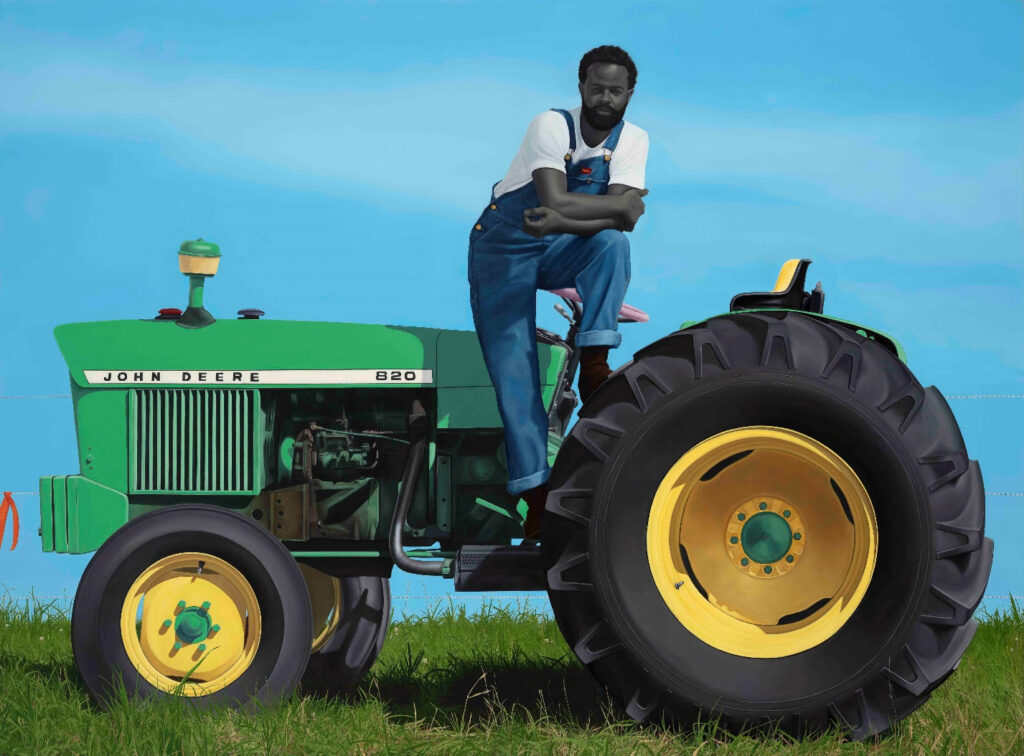
(Incidentally, I recently watched the movie of Ursula Leguin’s novel, The Lathe of Heaven, in which a young, white “effective dreamer” who unwittingly changes reality in his sleep, often disastrously, effaces racial differences and conflict by altering everyone, including himself and his Black girlfriend, to the same shade of pale gray.)
Sherald’s paintings correct the injustices of history: Some of them are side-eyed commentaries, with humorous or sarcastic titles. “A God Blessed Land (Empire of Dirt)” (2022) depicts a young black farmer proudly astride his John Deere tractor. “Breonna Taylor” (2020) depicts the 26-year-old medical worker murdered by Louisville Police is a botched raid in 2020.
“What’s precious inside of him does not care to be known by the mind in ways that diminish its presence” (2017) depicts a young Black person accoutered in traditional “white” cowboy wear: blue jeans, buckled belt, flag-patterned shirt, and Stetson. “For Love and For Country” (2022) reprises the famous Alfred Eisenstaedt photo of a sailor impulsively kissing a nurse during the ecstatic VJ Day celebrations at the end of WW2, in 1945, replacing the couple with a jauntily attired Black couple set against a blue background.
Sherald’s alternative universe of Black equality and empowerment may be a dream still, only partially realized in 2024 America, and at risk in 2025, but Americans who adhere to democracy, diversity, decorum, and decency need to dream it continually these days, as effectively as we can, and (paraphrasing Jesse Jackson and Barack Obama) to keep hope and change alive.
AMERICAN SUBLIME runs through March 9. San Francisco Museum of Modern Art. Tickets and more info here.

